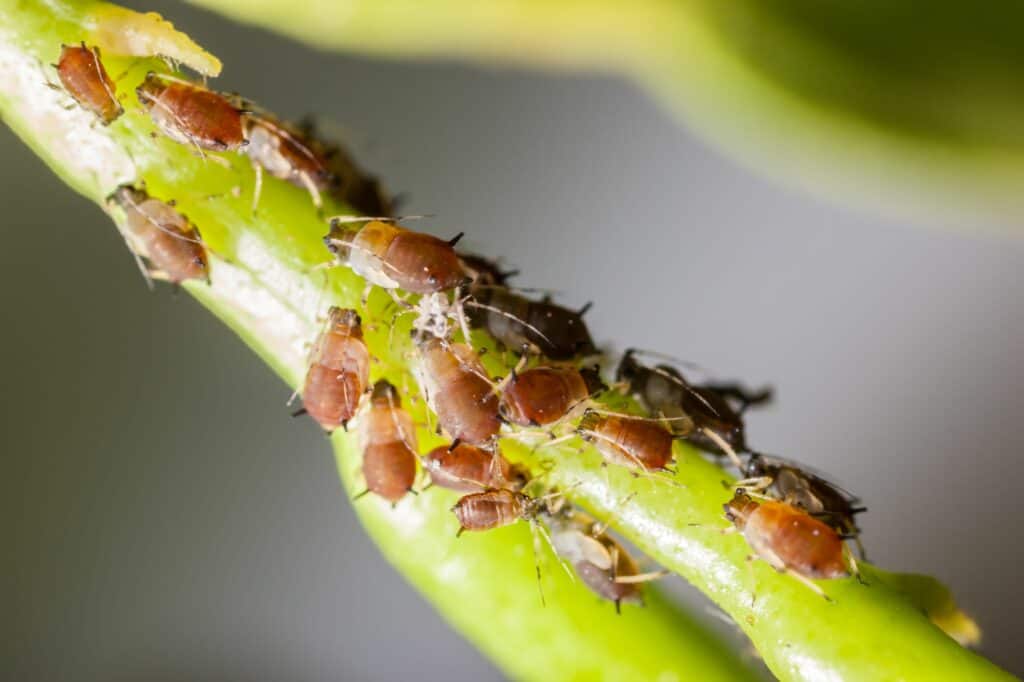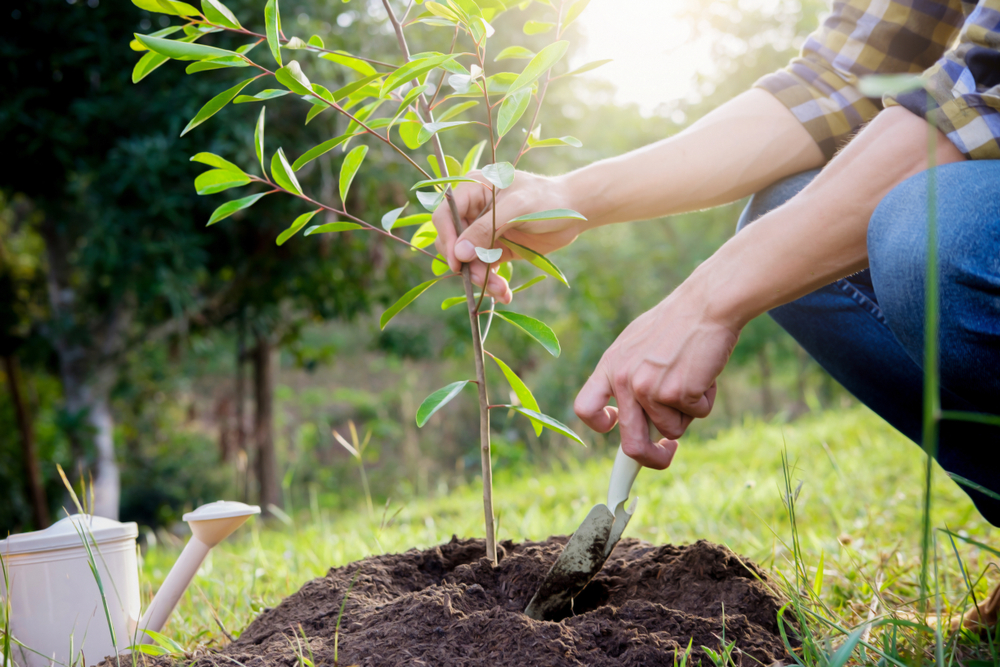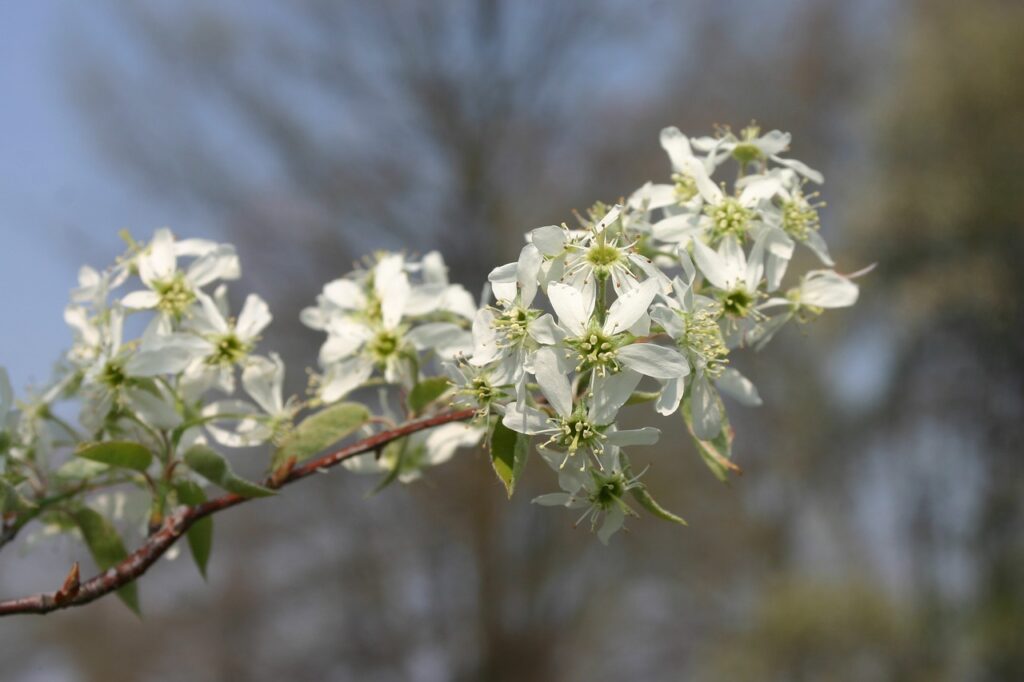Serviceberry trees are a popular choice for gardeners and landscapers, thanks to their beautiful spring blossoms, delicious berries, and attractive foliage. However, if you notice your serviceberry leaves turning yellow, it could be a sign of a problem that needs to be addressed.
Understanding why serviceberry leaves turn yellow can be challenging, as there are several potential causes. Some of the most common include nutrient deficiencies, pests, diseases, and environmental factors such as drought or overwatering.
Identifying the underlying issue is crucial in determining the best course of action to restore the tree’s health.
If you’re concerned about yellowing serviceberry leaves, it’s important to take action quickly to prevent the issue from worsening. By learning more about the potential causes and how to care for your serviceberry tree, you can help ensure that it remains healthy and vibrant for years to come.
Key Takeaways on Serviceberry Leaves Turning Yellow
- Yellowing serviceberry leaves can be caused by a variety of factors, including nutrient deficiencies, pests, diseases, and environmental stressors.
- Identifying the underlying issue is crucial in determining the best course of action to restore the tree’s health.
- Taking prompt action and providing proper care can help ensure that your serviceberry tree remains healthy and vibrant.
Also don’t miss:
Understanding Serviceberry Leaves

Serviceberry leaves are an important characteristic of the tree. They are typically oval-shaped and have a serrated edge. The leaves are green during the growing season, but they can turn yellow for various reasons. In this section, we will discuss the causes of yellowing serviceberry leaves and what you can do to prevent it.
Causes of Yellowing Serviceberry Leaves
Yellowing serviceberry leaves can be caused by several factors. Some of the most common causes include:
- Iron Chlorosis: Iron chlorosis is a common problem in many trees, but it is not typically associated with serviceberries. However, if the veins of the leaves are green while the rest of the leaf is yellow, it could be a sign of iron chlorosis.
- Nutrient Deficiency: Yellowing leaves can be a sign of nutrient deficiency. If the serviceberry is not getting enough nutrients, the leaves will turn yellow.
- Water Stress: Serviceberries require a lot of water, especially during the hot summer months. If the tree is not getting enough water, the leaves will start to turn yellow.
- Disease: There are several diseases that can cause yellowing leaves, including leaf spot and powdery mildew.
Prevention of Yellowing Serviceberry Leaves
Preventing yellowing serviceberry leaves requires proper care and maintenance of the tree. Here are some tips to prevent yellowing leaves:
- Water the tree regularly, especially during the hot summer months.
- Fertilize the tree with a balanced fertilizer to provide it with the necessary nutrients.
- Prune the tree regularly to remove any diseased or damaged branches.
- Treat any diseases promptly to prevent them from spreading.
Serviceberry Leaves Turning Yellow – 7 Common Problems
Yellowing leaves on a serviceberry tree can be caused by a variety of factors. Here are some of the most common reasons for yellowing leaves:
1. Overwatering or Underwatering
Overwatering or underwatering can both cause yellowing leaves on a serviceberry tree. If the soil is consistently waterlogged, the roots may begin to rot, which can lead to yellowing leaves. On the other hand, if the soil is too dry, the tree may not be able to absorb enough nutrients, which can also cause yellowing leaves.
2. Soil Quality

Poor soil quality can also cause yellowing leaves on a serviceberry tree. If the soil is too acidic or alkaline, the tree may not be able to absorb the nutrients it needs to stay healthy. Additionally, if the soil is too compacted, the roots may not be able to grow properly, which can also lead to yellowing leaves.
3. Lack of Sunlight
Serviceberry trees require plenty of sunlight to thrive. If a tree is planted in a shady area, it may not be able to absorb enough sunlight to produce healthy leaves. This can cause the leaves to turn yellow and fall off.
4. Drought
Drought conditions can also cause yellowing leaves on a serviceberry tree. If the tree is not getting enough water, it may not be able to absorb the nutrients it needs to stay healthy. This can cause the leaves to turn yellow and fall off.
5. Planting Too Deeply
If a serviceberry tree is planted too deeply, it may not be able to absorb enough oxygen from the soil. This can cause the roots to rot, which can lead to yellowing leaves.
6. Stress
Stress can also cause yellowing leaves on a serviceberry tree. Stress can be caused by a variety of factors, including drought, overwatering, poor soil quality, and lack of sunlight. If a tree is under stress, it may not be able to absorb enough nutrients, which can cause the leaves to turn yellow.
7. Fertilizer
While fertilizer can be beneficial for a serviceberry tree, too much fertilizer can cause yellowing leaves. Over-fertilization can cause the tree to absorb too much nitrogen, which can lead to yellowing leaves.
Identifying Diseases and Pests

Serviceberry trees are prone to various diseases and pests that can cause leaves to turn yellow. Identifying these issues early on is crucial to prevent further damage to the tree. Here are some of the common diseases and pests that affect serviceberry trees:
Leaf Spot and Rust
Leaf spot and rust are fungal diseases that can cause yellowing of leaves in serviceberry trees. Leaf spot is characterized by circular or irregular brown spots with yellow halos on the leaves. Rust, on the other hand, causes orange or brown spots on the leaves, which eventually turn yellow and fall off.
To prevent leaf spot and rust, it is important to keep the tree well-ventilated and avoid overhead watering. Prune any infected branches and dispose of them properly. Fungicides can also be used to control the spread of these diseases.
Powdery Mildew
Powdery mildew is a fungal disease that appears as a white powdery coating on the leaves. It can cause leaves to turn yellow and fall off prematurely. Powdery mildew thrives in humid conditions, so it is important to keep the tree dry and well-ventilated.
To control powdery mildew, prune any infected branches and dispose of them properly. Fungicides can also be used to control the spread of the disease.
Bugs and Pests
Several bugs and pests can cause leaves to turn yellow in serviceberry trees. Japanese beetles, aphids, borers, sawflies, and scale are some of the common pests that can infest serviceberry trees.
To prevent infestations, it is important to keep the tree healthy and well-maintained. Regular pruning and fertilization can help prevent pest infestations. Insecticides can also be used to control the spread of pests.
Seasonal Factors Influencing Leaf Color

Serviceberry trees are deciduous, meaning they lose their leaves every year. The leaves turn yellow and brown before falling off. This is a normal part of the tree’s growth cycle. In the spring, new leaves will form from the buds that survive the winter. Spring is also when you can expect white flowers to develop for a wonderful spring show.
The yellowing of serviceberry tree leaves can occur for several reasons, including seasonal factors. During the summer months, the tree may experience drought stress due to high temperatures and low rainfall.
This can cause leaves to turn yellow and brown. It is important to water the tree during dry periods to prevent drought stress. A tree needs about ten gallons of water per inch of trunk diameter per week. Don’t forget that your trees need water in the winter, as well.
In the fall, the leaves of serviceberry trees will change color and eventually fall off. This is due to the changing weather conditions, including cooler temperatures and shorter days. The leaves will turn yellow, orange, and red before falling off. This is a natural process and does not indicate any problems with the tree.
In the winter, serviceberry trees will lose their leaves and become dormant. This is a period of rest for the tree, and it is important to protect it from extreme cold temperatures and frost. Mulching around the base of the tree can help to protect the roots and keep the soil moist.
Serviceberry Tree Care
Serviceberry trees are a beautiful addition to any yard or garden. They are deciduous trees that produce delicious berries in the summer and have stunning fall foliage.
However, if you notice the leaves on your serviceberry tree turning yellow, it could be a sign of stress or disease. Proper care and maintenance are crucial to keep your serviceberry tree healthy and thriving.
Proper Watering and Mulching
Watering is essential for the health of your serviceberry tree. It is important to water deeply and regularly, especially during dry spells. A general rule of thumb is to water your tree once a week, providing one inch of water. However, be sure not to overwater your tree, as this can lead to root rot and other issues.
Mulching is also crucial for the health of your serviceberry tree. A layer of mulch around the base of the tree helps retain moisture and suppress weeds. It also helps regulate the temperature of the soil around the tree. Be sure to keep the mulch a few inches away from the trunk to prevent rot.
Planting and Soil Requirements

Proper planting and soil requirements are crucial for the health of your serviceberry tree. When planting, be sure to choose a location that receives full to partial sun and has well-draining soil. Serviceberries prefer slightly acidic soil with a pH between 4.5 and 6.5. If your soil is not within this range, you can amend it with sulfur or lime.
Pruning and Maintenance
Pruning is important for the health and shape of your serviceberry tree. It is best to prune in late winter or early spring before new growth begins. Remove any dead or diseased wood, as well as any crossing or rubbing branches. Be sure to sterilize your pruning tools with rubbing alcohol or bleach after each cut to prevent the spread of disease.
Regular maintenance is also crucial for the health of your serviceberry tree. Keep an eye out for pests and diseases, and address any issues promptly. Fertilize your tree in the spring with a balanced fertilizer, and be sure to follow the manufacturer’s instructions.
Additional Information
Serviceberry Varieties
There are several varieties of serviceberries available, each with unique characteristics. Some popular varieties include:
- Amelanchier alnifolia – This variety is native to North America and produces edible fruit that is commonly used in pies and jams.
- Amelanchier canadensis – Also known as Canadian serviceberry, this variety is popular for its attractive white flowers and red fruit.
- Amelanchier laevis – This variety is known for its smooth, gray bark and is commonly used as a landscaping plant.
- Amelanchier stolonifera – Also known as running serviceberry, this variety is known for its spreading growth habit and is often used as a ground cover.
When selecting a serviceberry variety, it is important to consider factors such as fruit production, growth habit, and disease resistance.
Using Serviceberries in the Garden
Serviceberries are a versatile plant that can be used in a variety of garden settings. Here are a few ideas for incorporating serviceberries into your garden:
- Edible landscaping – Serviceberries produce delicious fruit that can be used in a variety of recipes. Planting serviceberries in your landscape is a great way to enjoy fresh, homegrown fruit.
- Wildlife habitat – Serviceberries are a great plant for attracting wildlife to your garden. The fruit is a favorite of birds, and the plant provides habitat for a variety of other animals.
- Ornamental plantings – Serviceberries are an attractive plant that can be used as a specimen plant or as part of a mixed border. The white flowers and colorful fruit make this plant a standout in any garden.
When planting serviceberries, it is important to choose a location that receives full sun to partial shade. The soil should be well-drained and rich in organic matter. Serviceberries are generally easy to grow and require minimal maintenance once established.
Extension Resources

For more information on serviceberries and other fruit trees, check out the resources available from your local Extension office. Extension services offer a wealth of information on topics such as planting, pruning, and pest management. They can also provide guidance on selecting the best varieties for your area and climate.
Other Related Entities
Serviceberries are related to several other plants, including pears and quince. While these plants have different characteristics, they share many of the same growing requirements and can be grown together in the same garden. Berries are also a related entity, as serviceberries produce edible fruit that is similar in flavor to blueberries.
Frequently Asked Questions
What causes yellow leaves on serviceberry plants?
Yellow leaves on serviceberry plants can be caused by a variety of factors. One common cause is iron chlorosis, which occurs when the plant is not getting enough iron. This can be caused by a high pH in the soil or by a lack of iron in the soil.
Another common cause is overwatering, which can lead to root rot and ultimately cause the leaves to turn yellow. Additionally, yellow leaves can be a sign of a pest infestation or a fungal disease.
What are common diseases that affect serviceberry trees?
Common diseases that affect serviceberry trees include rust, powdery mildew, and fire blight. Rust is a fungal disease that causes orange spots on the leaves and can eventually cause the leaves to turn yellow and fall off.
Powdery mildew is another fungal disease that causes a white powdery substance to appear on the leaves. Fire blight is a bacterial disease that causes the leaves to turn black and can ultimately kill the tree.
How can I prevent my serviceberry leaves from turning yellow?
To prevent serviceberry leaves from turning yellow, it is important to make sure the plant is getting enough water, but not too much. The soil should be kept moist, but not waterlogged. Additionally, it is important to make sure the plant is getting enough nutrients, particularly iron.
If the soil pH is too high, it may be necessary to add iron supplements to the soil. Finally, it is important to keep the plant free of pests and diseases by regularly inspecting the leaves and removing any affected leaves or branches.
What are the signs of rust on serviceberry leaves?
The signs of rust on serviceberry leaves include orange spots on the leaves and, in severe cases, the leaves may turn yellow and fall off. Rust is a fungal disease that is most common in humid environments.
Is it normal for serviceberry leaves to turn orange or red?
Yes, it is normal for serviceberry leaves to turn orange or red in the fall. This is a natural part of the plant’s life cycle and is not a cause for concern.
How often should I water my serviceberry tree?
Serviceberry trees should be watered regularly, particularly during hot, dry weather. The soil should be kept moist, but not waterlogged. It is important to water the tree deeply, but infrequently, rather than giving it frequent shallow waterings.

Hey, I’m Lisa and I’ve been an avid gardener for over 30 years. I love writing, talking and living in the garden! Feel free to connect with me on my socials below


